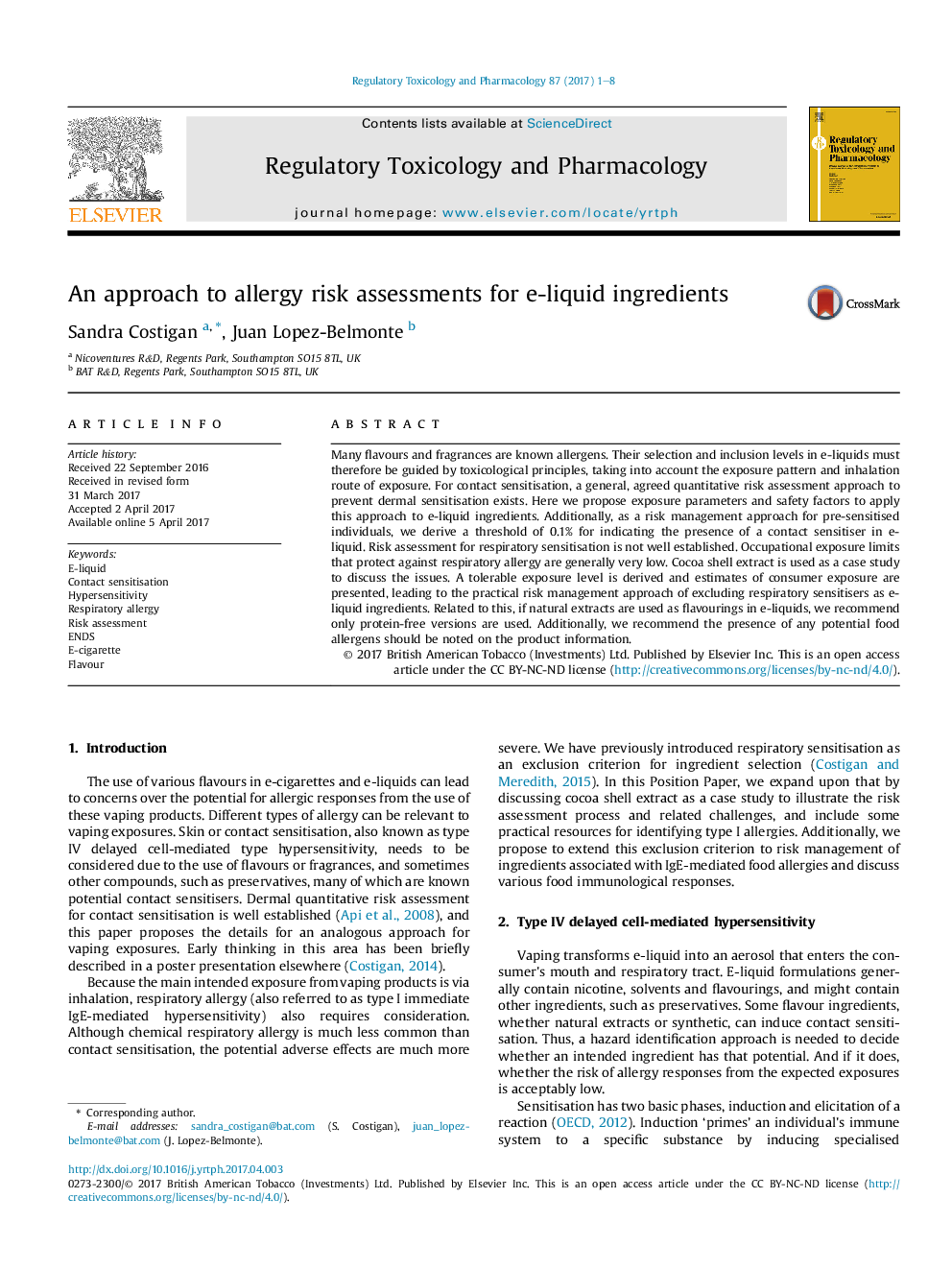| Article ID | Journal | Published Year | Pages | File Type |
|---|---|---|---|---|
| 5561329 | Regulatory Toxicology and Pharmacology | 2017 | 8 Pages |
â¢Assessing and managing risk for contact and respiratory allergens in e-liquid.â¢'How to' guide for a vaping contact allergy quantitative risk assessment.â¢Don't use respiratory allergens!.â¢Case study: Cocoa shell extract respiratory sensitisation risk assessment.
Many flavours and fragrances are known allergens. Their selection and inclusion levels in e-liquids must therefore be guided by toxicological principles, taking into account the exposure pattern and inhalation route of exposure. For contact sensitisation, a general, agreed quantitative risk assessment approach to prevent dermal sensitisation exists. Here we propose exposure parameters and safety factors to apply this approach to e-liquid ingredients. Additionally, as a risk management approach for pre-sensitised individuals, we derive a threshold of 0.1% for indicating the presence of a contact sensitiser in e-liquid. Risk assessment for respiratory sensitisation is not well established. Occupational exposure limits that protect against respiratory allergy are generally very low. Cocoa shell extract is used as a case study to discuss the issues. A tolerable exposure level is derived and estimates of consumer exposure are presented, leading to the practical risk management approach of excluding respiratory sensitisers as e-liquid ingredients. Related to this, if natural extracts are used as flavourings in e-liquids, we recommend only protein-free versions are used. Additionally, we recommend the presence of any potential food allergens should be noted on the product information.
